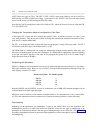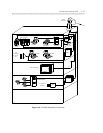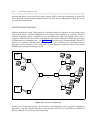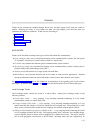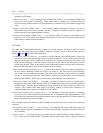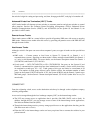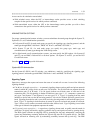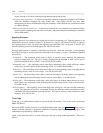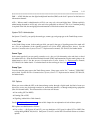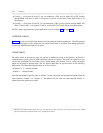1-40 TRUNKING
_ ___________________________________________________________________________________________________________________________
_ ___________________________________________________________________________________________________________________________
_ ___________________________________________________________________________________________________________________________
signals on-hook on all calls by opening the path between the tip and the ring.
• LS (loop start) supervision — A supervisory signaling scheme used between a telephone and a PBX in
which the telephone completes the loop current path. Some PBXs provide loop start trunk
arrangements, but due to the difficulties with glare resolution, AT&T PBXs do not provide these trunks
as standard offerings.
• RB (reverse battery) supervision — A supervisory technique on 1-way trunks that uses open and closure
signals from the originating end and reversals of battery and ground from the terminating end (normally
used on DID trunks).
Signaling Protocols
Signaling protocols are conventions for alerting the far end of an incoming call. Signaling protocol is an
administrative option for trunks on System 75, System 85, G1, and G2. On System 85 and G2, you specify
the signaling protocol when you specify the signaling type with PROC 100. On System 75 and G1, you
enter the signaling protocol as the trunk type at the Trunk Group screen.
Network trunks operate as automatic, immediate start, dial tone, wink start, delay-dial, or dial-repeating
according to the type of start-dial signal the switch sends out or expects to receive. The different signaling
protocols are:
• Automatic — The originating switch sends no digits or start-dial signal, expecting the terminating
switch to complete the call. The call is usually completed by the attendant or other service such as
Centralized Attendant Service (CAS). (Use with E & M, GS, or RB.)
• Immediate start — The originating switch sends digits immediately after seizure (off-hook) without
waiting for a start-dial signal from the terminating switch. (Use with E & M and RB.)
• Dial tone — The terminating switch sends precise dial tone to the originating switch, indicating that the
terminating switch is ready to receive digits. (Use with E & M or GS.)
• Wink start — The terminating switch sends a wink start (momentary off-hook) signal to the originating
switch, indicating that the terminating switch is ready to receive digits. (Use with E & M.)
• Delay-dial — The terminating switch sends a delay-dial signal (an off-hook signal followed by an on-
hook signal) to the originating switch, indicating that the terminating switch is ready to receive digits.
(Use with E & M.)
• Dial-repeating — The originating switch sends digits after waiting for a dial tone from the terminating
switch. The connection is said to be "cut through" because the connection with the destination switch is
established before the destination extension is dialed. This type of alerting is used in tandem tie trunk
networks. (Use with E & M.)
Trunk Type
Trunk type is an administration option on System 85 and G2 switches. You set the trunk type through
PROC 100 Word 1.
On System 85/G2 switches, there are over 100 administrable trunk types (see appendix C). Each type is a
numeric code that represents a designated combination of trunking application, and signaling types. Each
combination is represented by a different code.
Listed on the tables that follow are some trunk types that may warrant further explanation. They are as
follows:



